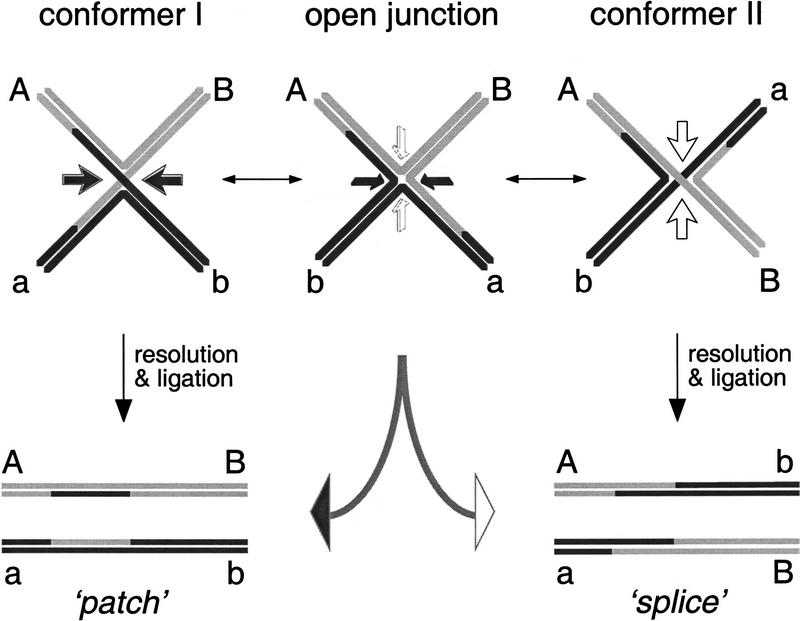Figure 1.
Classical view of the formation of patch (i.e., noncrossover) and splice (crossover) recombination products by resolution of pairs of crossed strands present within the two isomeric forms (conformers) of the Holliday junction. Recent studies have shown that resolvases can bind Holliday junctions and cause them to adopt an open square-planar structure (middle). The studies described in this report indicate that the type of recombinant formed is dependent on the way that the resolvase assembles on the four fold symmetric open junction. Nucleolytic cleavage to give rise to patch or splice recombinants is indicated by the solid and open arrows, respectively.

